THE MINUTEMAN Volume 4, August 2023
Chest Rigs vs LBE's, RECCE Rifles, and why Fieldcraft matters
CHEST RIGS vs LBE’S
Ah, the age old debate, which is better? Well that depends on your use, environment, individual/group needs, etc… This isn’t your normal answer to why but instead this is how I have broken it down for what works best for me and why.
Chest Rigs:
The Chest Rig, as we know it, really became famous during the Vietnam War by the ChiCom’s (Chinese Communists) and North Vietnamese Army. The classic ChiCom Type 56 rig was often copied, emulated, and worn by our own Army SF, SEALS, and MACV-SOG. The Selous Scouts from the Rhodesian War often wore captured ChiCom rigs and even had their own versions made to suit the various weapon platforms that they used.
I own several chest rigs, from your micro rigs to heavy duty chest rigs to surplus options like Chicom and Rhodesian chest rigs. They all have a use and some make more sense than others.
Realistically chest rigs are ideal for vehicular movement, direct action scenarios (CQB), and “grey man” concepts based on being discreet and blending in. Fast and easy access to fighting kit trumps everything else. So you balance out your fighting load on your chest rig with an assault pack for sustainment or mission specific needs.

Pros of this set up for me is that it creates a work station of sorts for fighting gear. Knife, rifle and/or pistol reloads, and med gear are all right up front and easy to grab. K.I.S.S. methodology at its finest. It’s use also helps with mobility and speed in the field.
Cons of the chest rig are that it does a horrible job of heat management, can prevent you from hugging the ground (depending on the style and size), and can make travel difficult in terrain where balance is a priority. The larger style you go with then the more you are likely to put in it which can cause increased strain on one’s neck and back.
To add, chest rigs are great for stashing in a Get Home Bag (GHB), active shooter kit, home defense bag, neighborhood watch setup, or any other scenario that requires speed and ease of use.
Load Bearing Equipment (LBE):
The LBE as we know it today really started taking shape during WWII and the Korean war. We went from a cartridge belt and haversack to the need for magazine pouches as our military transitioned from the M1 Garand to the M14 to the M16. So with this change the way we carried ammo had to change. We went from the M1956 Load Carrying System (predecessor to ALICE) in the mid 50’s to our favorite lady, ALICE, at the tail end of the Vietnam war. ALICE continued to be used until we were introduced to MOLLE in early 2000. But this quickly disappeared during the GWOT years in favor of armor setups for vehicle operations, thus the disappearance of the LBE from the American gear scene. Essentially the whole idea for the LBE was to enable the soldier to carry their fighting gear and basic sustainment gear while out in the field. The Brits have their PLCE (Personal Load Carrying Equipment), the Russians have SMERSH, and Americans have this weird mix of private companies producing legit LBE platforms like the Nixie Works Light Fighter Rig and Velocity Systems Jungle Kit, to name a few.
I tried for a couple of years to piece together an LBE out of a mixture of ALICE and MOLLE trying to find a happy balance for a patrolling loadout. Through this trial and error period I settled on getting a Russian SMERSH LBE for the combination that was going to work best for me.
LBE’s are ideally suited for foot patrols over varied terrain, distances, and periods of time. In my use, an LBE provides me with a basic fighting loadout, administrative needs (like observation gear, communication equipment, basic survival (E&E) items, and sustainment for a 24 hour period. You can push that time period out by adding a pack (sized anywhere from an assault pack to a long range patrol pack) to push the mission as needed. I strongly feel that the 24 hour patrol is probably the most common scenario that will be conducted by the rural person for maintaining a security awareness on their property and surrounding areas.
Pros of the LBE setup is that it creates an efficient/organized means of carrying equipment in an easy to access manner while maintaining mobility and balance (when worn correctly) on foot and a lower center of gravity vs a chest rig. Easy to get low while going prone. Having the load off one’s chest allows for better heat management and upper body movement. This setup also allows for adding different backpacks depending on sustainment or mission needs.
Cons of the setup is it makes vehicle operations difficult (but then again it wouldn’t be the appropriate kit for that (see the above write-up on chest rigs) and it does add bulk around the waist making you wider then you really are so maneuvering in tight places (such as thick underbrush) can be tiresome.
One other important note on LBE’s is when choosing a pack to wear with them. Not all packs will work, the Brits have short backed Bergens that are designed to ride on the rear pouches (they create a shelf of sorts) to allow the LBE and pack work together. Medium ALICE packs also work great as well as any number of assault style packs. Most general backpacking packs won’t work as well so you need to be aware of how they work together.
I have tested both setups (setup with the identical gear) for 24 hour property patrols and have experienced the pros and cons for myself, I highly suggest (if possible) for you to do the same. As my buddy
has discovered himself recently through relentless testing, one definitely performed better than the other during 24 hour patrols, in varied terrain and conditions. Even our own military is starting to see the need to go back to LBE as we transition away from the GWOT years back to a more traditional battlefield for possible upcoming conflicts.RECCE Rifle
(Jack of all Trades, Master of None)
Whoa Jay, RECCE rifles are so yesterday, you’re gonna get laughed at on this one… I know, I know gang, but bear with me on this as I go through why I like the RECCE Rifle concept.
First, a little history on the “RECCE Rifle” concept. You read that right, it isn’t a specific rifle but rather a concept of a rifle that has been purpose built to fill multiple roles. Back in the 90’s it was a concept explored by the Naval Surface Warfare Center’s Crane Division for the SEALS. They wanted/needed something that was more lethal than the general M4 Carbines that they were using but lighter and more versatile than the current (at that time) MK14 Enhanced Battle Rifle. This was meant for reconnaissance meaning it needed to be lightweight, mobile, and still be able to be accurate at mid range distances. That rifle is still in use today and is individually tailored by each user to fit their needs.
So the original requirements were:
-16” to 18” barrel
-Free floated hand guard
-Chambered in 5.56
-Weight under 9lbs
-Mid-Length Gas System
-1-6 or 1-8 LPVO or similar optic
All of this created a “General Purpose Rifle” or “GPR” that was capable of accurately engaging targets at close to medium range, and when the magnification was dialed up on your LPVO you could confidently identify and engage targets out to 500 yards. Although realistically, most engagements would be inside of 200 yards. So when building a RECCE Rifle, there are many decisions to be made such as choosing an upper and lower receiver, stock, barrel, trigger, muzzle device, bipod, optic, laser, and weapon light. Not all of these are needed but each should be carefully considered when setting up your rifle for your own needs.
So what does this all have to do with a rifle for the Modern Minuteman? Well for this Midwestern guy, this meant having a rifle system that could be used in heavily forested terrain for shots from 25 yards to a couple hundred yards but still be able to identify and engage targets out to 500 or 600 yards across open farm fields and river valleys. So a rifle that can go from being a patrol rifle to a stable marksmanship platform was a needed tool and the RECCE Rifle concept fit that “Jack of all Trades, Master of None” profile just right. So what is my rifle?
Base rifle is an Androcorp Industries (ACI) Bravo 16 Mod 0 AR with:
– 16″ 4150 CMV Melonite barrel with 1/7 Twist
– Mid-Length Gas System
– EvolV Dual Port Brake
– 15″ free floated MLOK Handguard
– MFT Minimalist Stock
For my needs I added the following:
-1-6×32 Firefield Rapidstrike LPVO
-Troy BUIS
-Zentico Perst 4 IR Laser
-Asslete weapons light (Surefire Scout clone)
The entire package with a loaded magazine comes in at just over 9lbs.
Regardless if you call it a General Purpose Rifle (GPR), a RECCE Rifle, or just a Minuteman rifle, it doesn't change the fact that we all need that 1 rifle that can take care of the majority of our needs and do it well.
FIELDCRAFT
(Think of it as Tactical Bushcraft)
Basic fieldcraft has become a bit of a lost art today. For all the technology at the Minuteman’s disposal, now or in the future, there will still be guys and gals on the ground, living out of their packs. Living out of a pack for long periods of time can wear you down and constant training, lack of sleep, and consuming the same rations, all takes their toll. Becoming efficient at fieldcraft is only possible by spending time, effort, and attention to learning and practicing living and surviving in the outdoors.
I consider the following must have skills for working and surviving out in the field:
-Fire Making
-Shelter Building/Site Selection
-Navigation (land/water)
-First Aid/Self Care
-Water Procurement
-Hunting Small Game/Foraging
-Cooking
-Camouflage/Concealment
-Communication
-Signaling
-Tracking
-Observation
-Evading
-Rope Work/Knot Tying/Lashings
-and many more….
I know the military has the saying “EMBRACE THE SUCK” and it's true, many times life is just gonna suck in the field. I come from a mountaineering background and we had a similar saying that was “THE ART OF SUFFERING”. I think that one is a little more applicable because surviving, even thriving, in the field is an art form. Think of fieldcraft as “Tactical Bushcraft”.
So let’s look at one of the basic skills from above, FIRE… Fire is a top 3 wilderness survival priority. It can provide warmth, safety, and light. It can also be used to purify water, signal for rescue, cooking, and more. Many will say “I don’t need to learn no fancy fire making skills, I carry a Bic lighter with me”, that’s all fine and dandy until it doesn’t work.
For me it all starts with a fire kit. I’m a firm believer in the rule of 3’s for ignition sources and tinder sources.
My ignition sources:
-Lighter wrapped in duct tape
-Lifeboat matches with striker
-Ferro rod with striker
My tinder sources:
-Petroleum coated cotton balls in a metal tin
-Fatwood
-Wetfire fire starters
The duct tape on the lighter can extend a flame for several minutes which is useful for making fires in wet conditions. The metal tin can be used for making char cloth or for using as a dry surface for tinder bundles. Fatwood can be scrapped off and put into larger tinder bundles for lighting with a Ferro rod. The resin in the fatwood catches a spark easily and will hold a flame for a few minutes.
The goal with your fire kit should be to make a fire in any situation at any time. Just remember fire prep and practice is just as important which we can cover at another time!
The point of this is to encourage everyone to get out and practice putting this all together. Create a scenario and play it out. It doesn't have to be tactical, but it has to be purposeful in application. Here is a video I put together utilizing several fieldcraft skills during an outing.
Affiliate Highlight:
New Photon Holster from Alien Gear Holsters is their newest carry option that can be worn multiple ways, swapping between IWB and OWB whenever you choose. I personally use this holster and would recommend it to anyone!




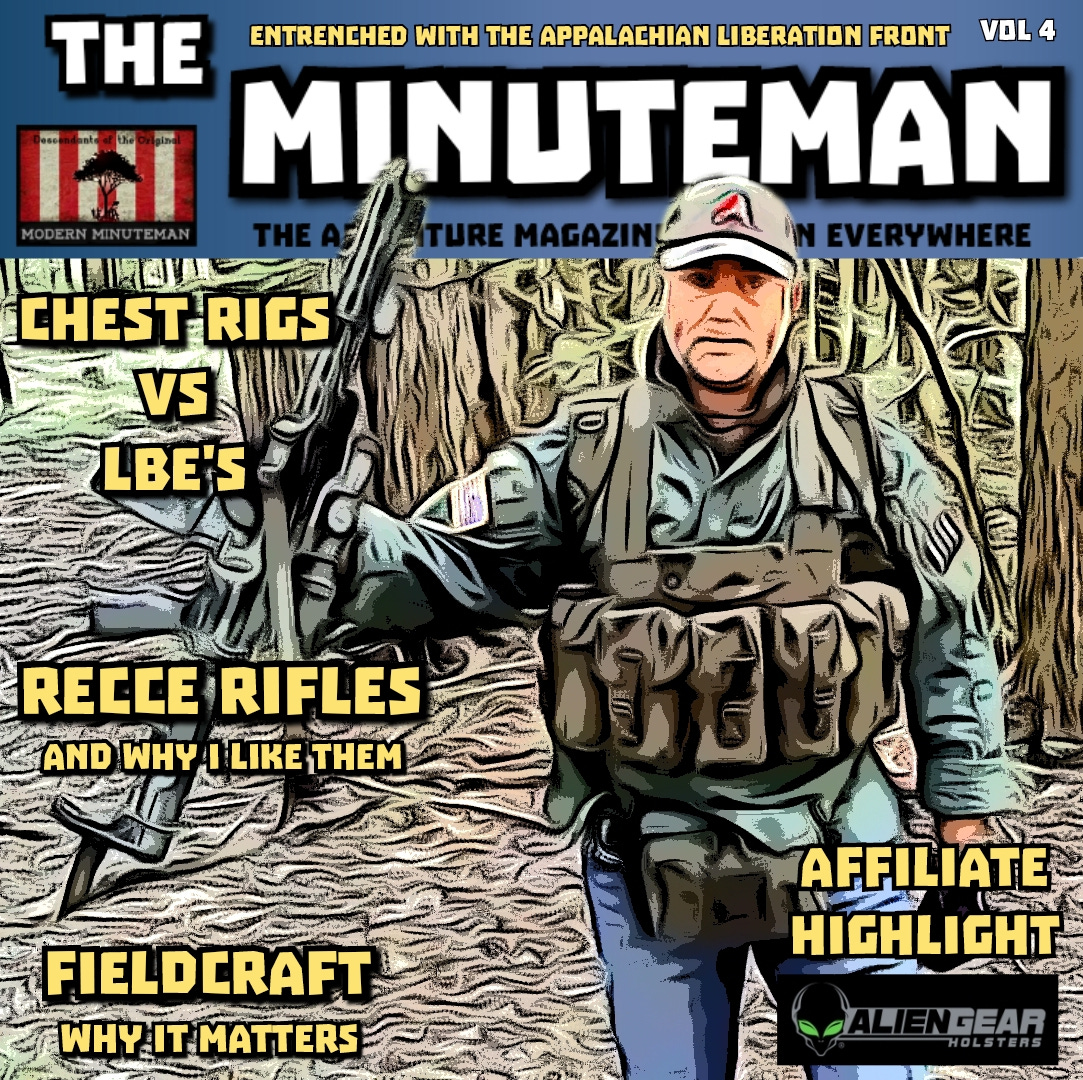
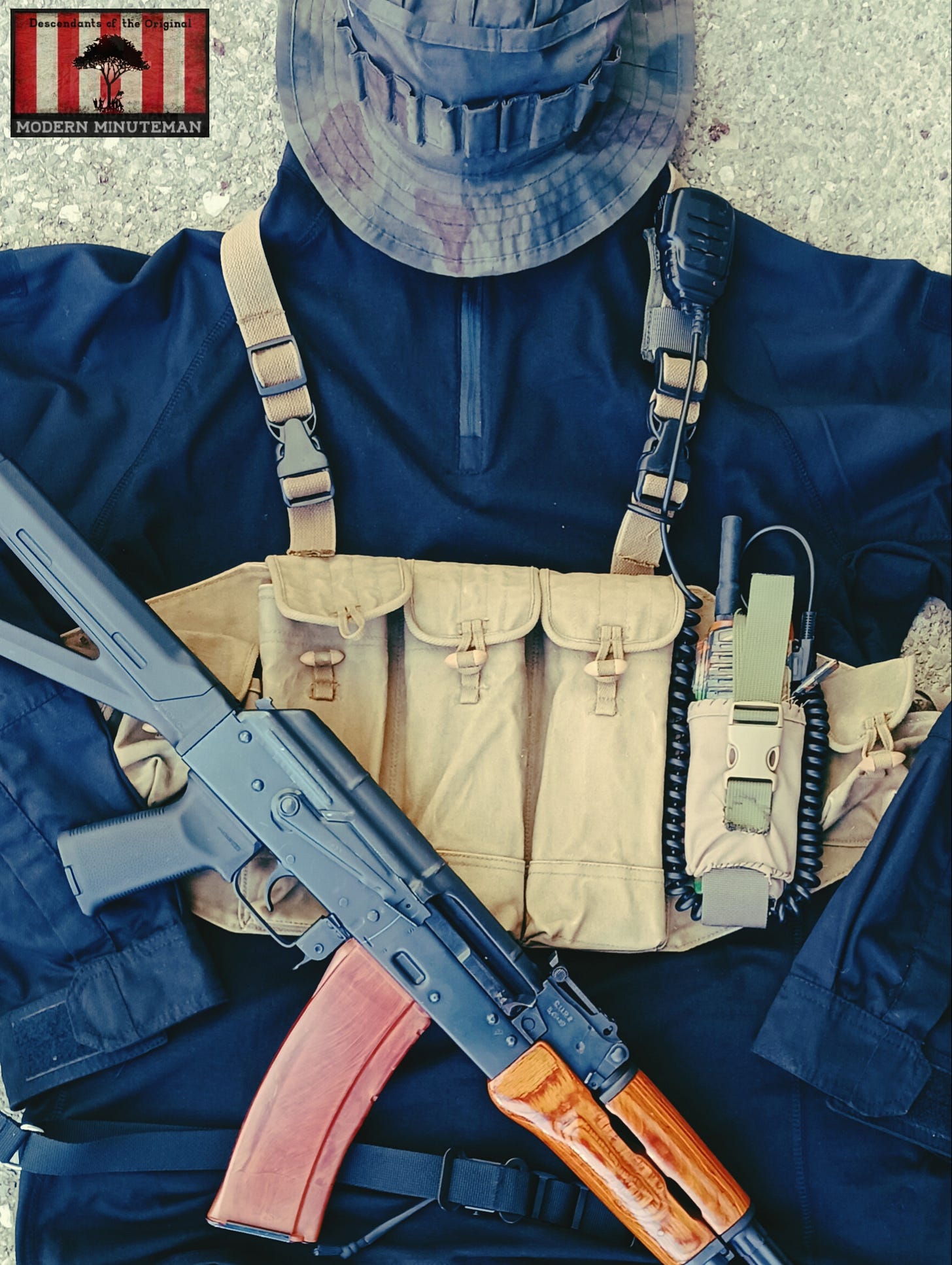
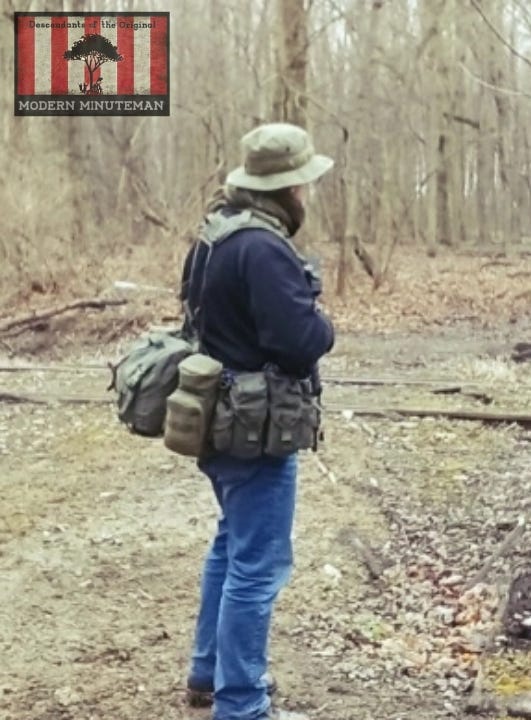
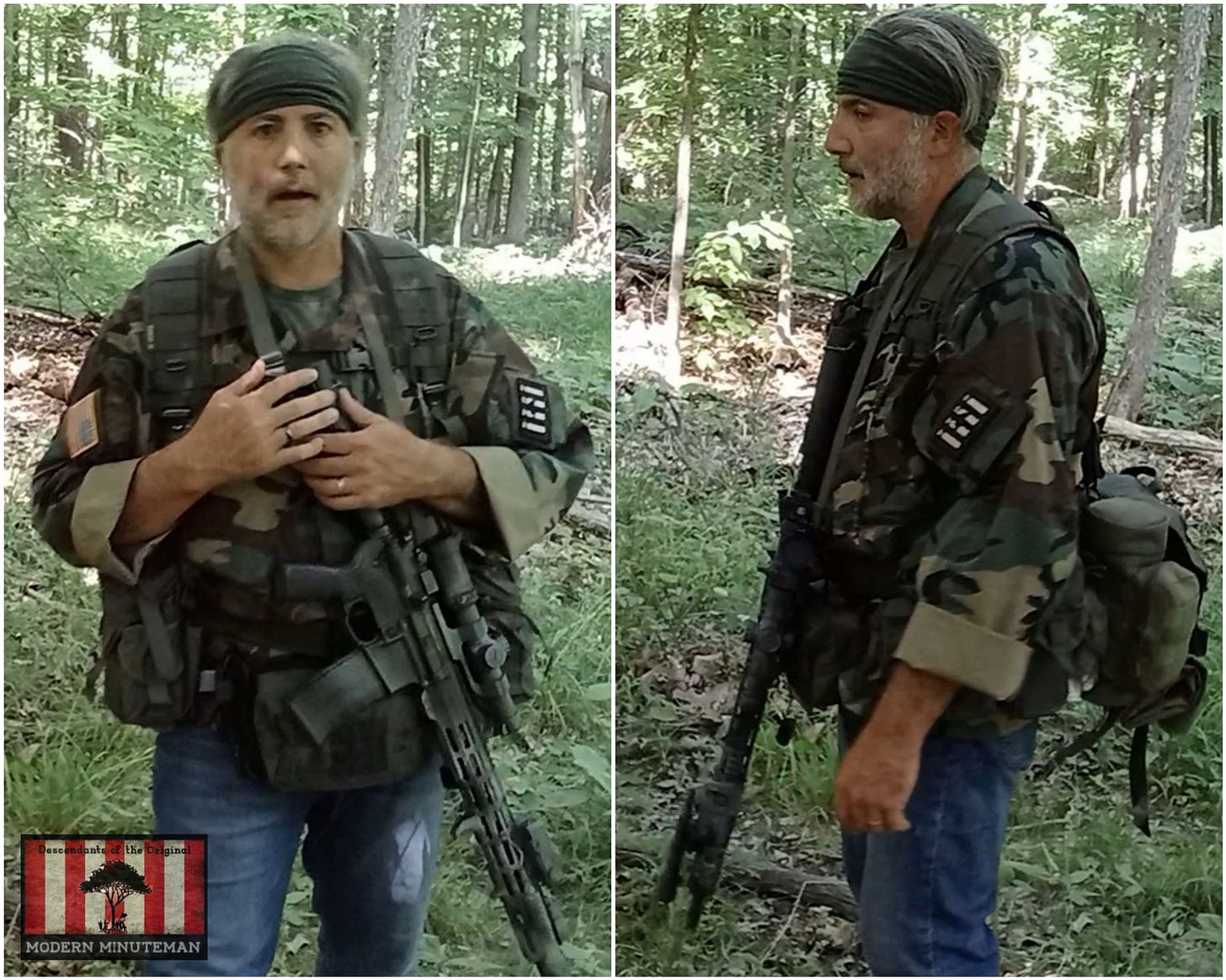
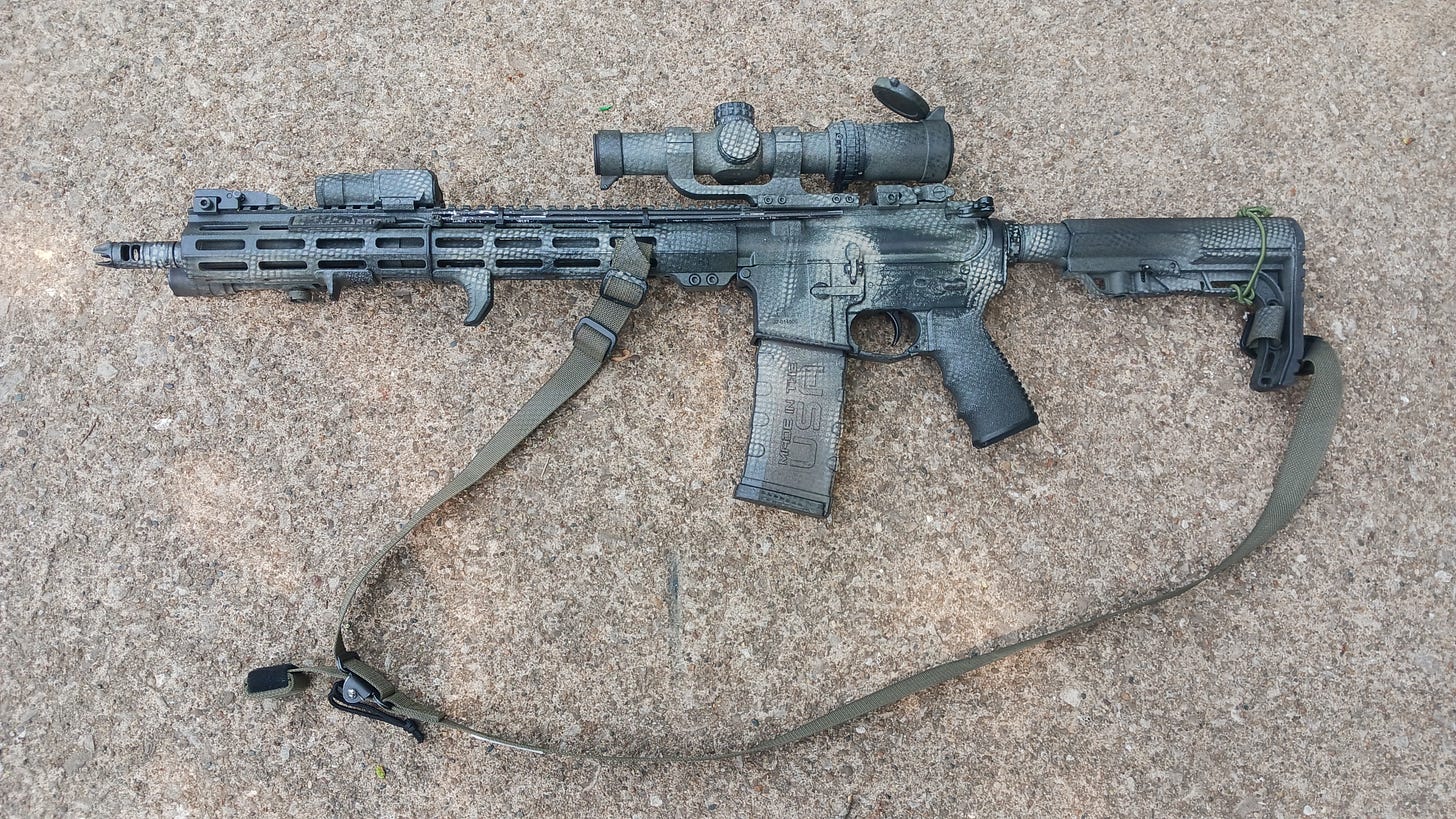

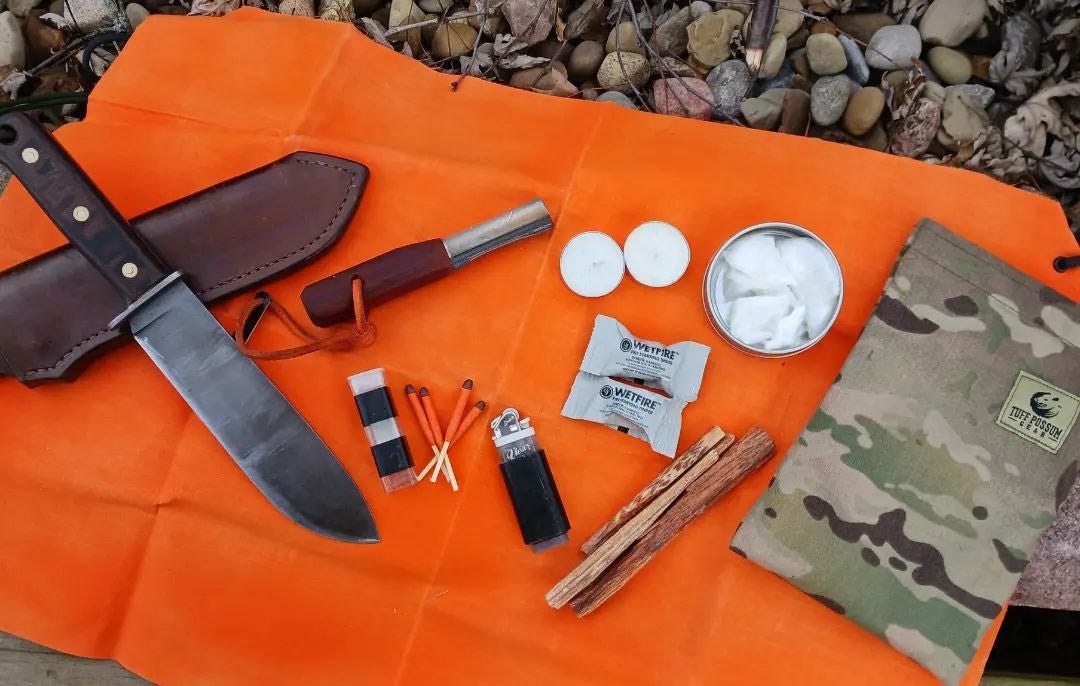
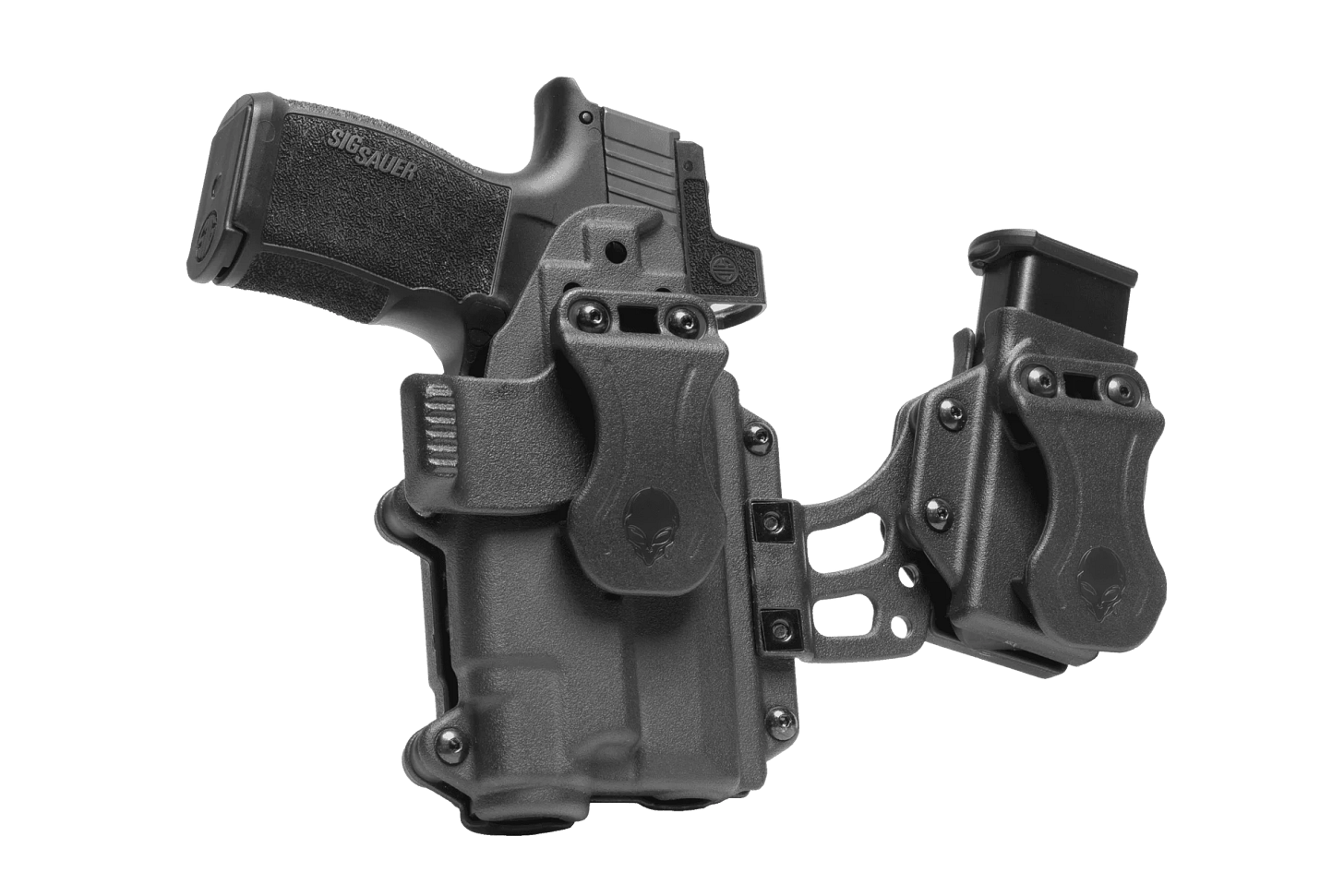
Chest rigs are for quickies. If you're going to live out of your rig LBE ( I'm am old guy that likes my ALICE) is the logical and choice.
Well done!!